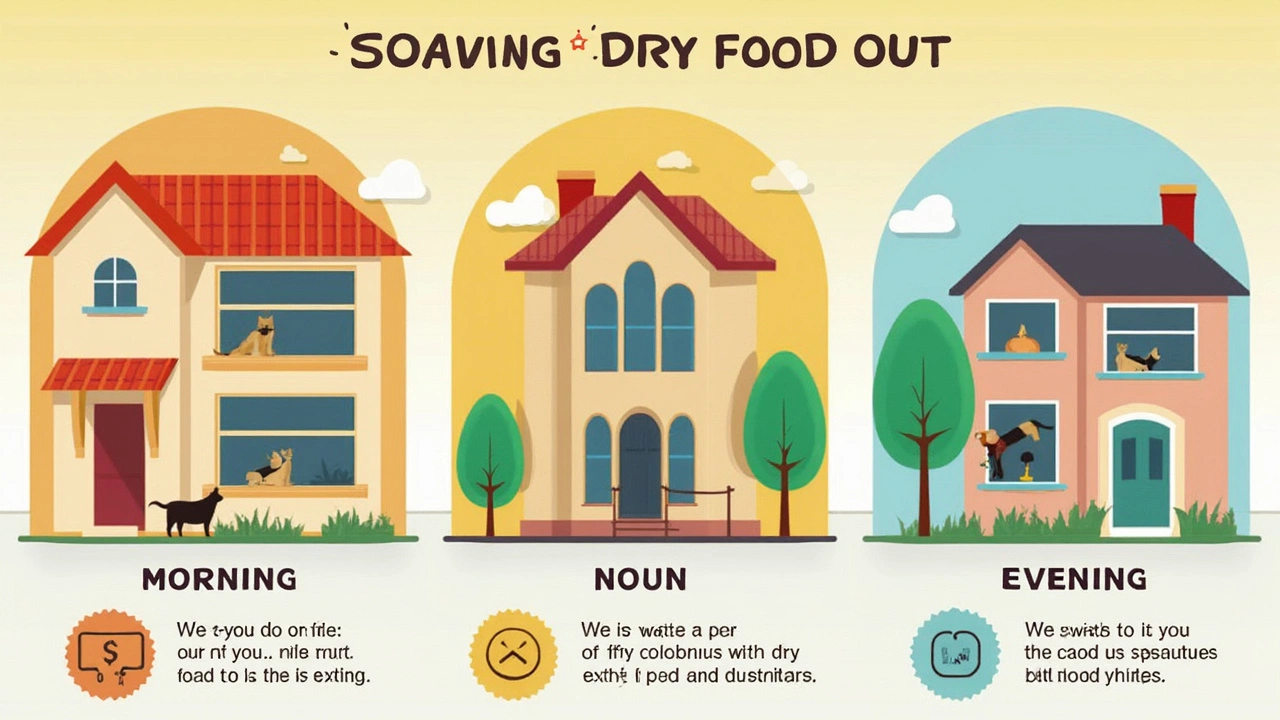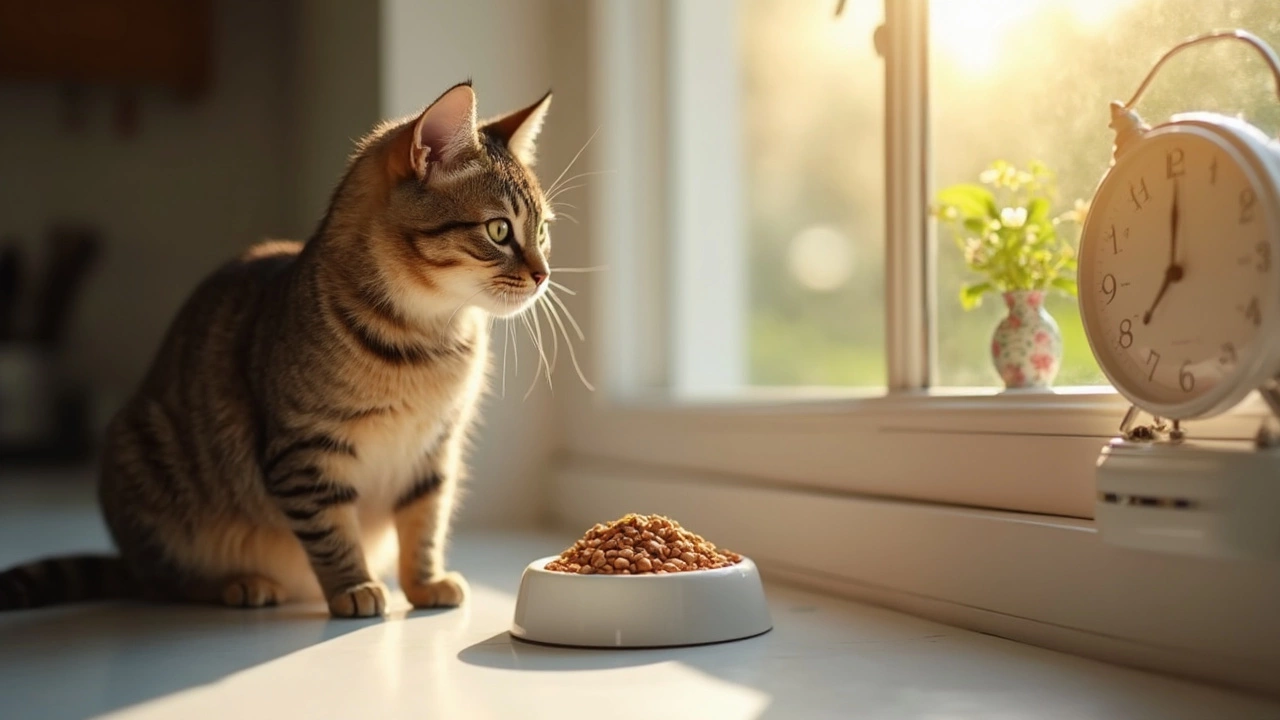Ever walked through your kitchen at night and caught your cat crunching on dry food, as if they’re living their best little midnight life? The debate over whether we should leave dry cat food out all day—what the pet crowd calls "free feeding"—is one of those surprisingly heated topics that stirs up cat forums everywhere. There’s no one-size-fits-all answer, either. The best way to feed your furry buddy depends on more than convenience or tradition: it’s about their health, lifestyle, and even a bit of feline psychology. Here’s the real scoop, with facts that’ll make your whiskers twitch.
Why Free Feeding Dry Food Became Popular
Cats are famously independent creatures—so it makes sense that many cat owners lean toward a feeding style that gives their pets freedom too. The concept of free feeding took off decades ago when dry cat food exploded onto the market for its convenience. Big brands encouraged the practice, showing happy kitties nibbling food whenever they pleased. At the same time, busy lifestyles meant people wanted a low-maintenance way to keep their pets fed without worrying if they’d be home at dinnertime. The idea was: just keep the dry food bowl topped up and your cat will eat when hungry. But that approach skips over a cat’s natural instincts. Domesticated or not, cats’ ancestors didn’t have a never-ending bowl of biscuits in the wild across Aotearoa or anywhere else. They hunted and ate in bursts. Modern cats, especially those living entirely indoors, don't have to use energy looking for food, so unlimited access to kibble can throw things out of balance.
Convenience isn’t the only reason dry food and free feeding took off in New Zealand and elsewhere. Dry food is shelf-stable, so it lasts for ages and is less smelly than wet food. Many cat owners believe it helps keep their cats’ teeth clean, since crunchy pieces are supposed to scrape away plaque. Scientific studies, though, suggest that the dental benefits are mild at best—unless the kibble is specifically designed for dental health. So if you’re hoping to fight tartar by topping up a bowl of biscuits, you might not be getting the results you think.
There’s another thing: even though most cats will graze and eat small amounts over time, free feeding can also lead to mindless snacking, which is a fast track to feline obesity. A 2023 New Zealand Veterinary Journal study reported that as many as 35% of pet cats seen in clinics were overweight or obese, a trend that's been blamed in part on unlimited access to calorie-dense dry food. Still, some owners swear by free feeding, especially those with unpredictable schedules or with cats that prefer many small meals throughout the day. So why is it such a controversial method, and could it be the right choice for you and your cat?
The Risks of Leaving Dry Food Out
The convenience of always-available kibble sounds great—until you consider what it does to your cat’s body and mind. Cats aren’t programmed to count calories or resist a food bowl that’s always full. Just like us, many eat out of boredom or stress. Over time, that can spark a string of health issues, most commonly obesity, which opens the door to problems like diabetes, arthritis, and heart strain. In Wellington, vets often see house cats who’ve quietly doubled in size over the years, sometimes not catching it until health issues set in.
The boredom factor isn’t just for humans, either. Cats have natural hunting behaviors and need mental stimulation. If eating becomes a constant, mindless activity instead of a stimulating hunt or mealtime ritual, cats can get lazy, bored, or even anxious. Experts from Massey University’s School of Veterinary Science remind us that regular, portioned meals can provide opportunity for interactive feeding, puzzle toys, or even hiding food, which delivers valuable stimulation for indoor kitties.
Then there’s the question of food safety—yes, even with “shelf-stable” dry food. Wellington’s infamous damp winters can wreak havoc on food left out for long stretches, causing kibble to get stale or even moldy, especially if your house is prone to moisture. Not to mention, dry food sitting in bowls can attract ants, flies, or even rodents. Did you know a study from the University of Sydney found that 18% of pet food bowls contained unsafe bacteria, mostly due to infrequent cleaning? Even dry kibble, left exposed, can pick up dust and germs.
Most critically, free feeding makes it super easy to miss signs that something is off with your cat. If you’re not tracking daily food intake, a slump in appetite or sudden spike could go unnoticed, even though those might be the first clues to health problems. Structured mealtimes give you a built-in check on your cat’s habits, so you’ll spot issues quickly.

Why Portion Control Matters for Cat Health
It’s tempting to trust your cat to self-regulate, especially if theirs is the face that could launch a thousand ships, but biology doesn’t always back that up. Cats can be instinctively driven to eat more than they need, especially with calorie-rich foods. Portion control is about more than staving off love handles—it helps prevent kidney disease, urinary issues, and diabetes, all of which are increasingly common in pampered pets.
Let’s get specific: The average adult cat only needs about 250–300 calories per day. Here’s a quick look at how common cat feeding styles impact health:
| Feeding Style | Pros | Cons |
|---|---|---|
| Free Feeding (Dry Food) | Convenient, suits busy routines | Obesity risk, hard to monitor appetite, food can spoil |
| Portion-Controlled Meals | Monitors weight, supports health, builds routine | More effort, requires set schedule |
| Combination (Wet + Dry, Timed) | Variety, encourages water intake, manageable schedule | Some planning needed, can confuse picky eaters |
Portioned meals have a clear edge when it comes to keeping your cat at a healthy weight and letting you track their habits. A strict schedule, with two or three measured meals a day, helps prevent unhealthy grazing. If your cat is high-energy or very young, you might lean toward smaller, more frequent meals—which you can still measure, rather than leaving out the entire day’s food.
Here’s something many owners don’t realise: cats in the wild may eat 10–20 small meals in 24 hours, but they actually work for every bite. Domestic cats, unless given puzzle feeders or food-dispensing toys, don’t need to "hunt" their kibble. This mismatch can lead to what some vets call “couch potato syndrome”—overweight cats who lounge all day for easy calories. Feeding in measured, predictable amounts also brings security and structure to your cat’s routine. Anxious or food-focused cats often thrive when they know when food’s coming, rather than always having it around.
Plus, with portion control, it’s way easier to use your cat’s love of food for enrichment. Hiding bits around the house or using interactive feeders taps into their instincts and gives them a little workout. Bonus: cats entertained by "hunting" food are less likely to attack your feet at 4 am!
Smart Feeding Strategies Every Cat Parent Should Try
So, if bottomless bowls of kibble aren’t ideal, what feeding methods keep your cat healthy and happy? First, check the label for guidelines specific to your cat’s age, weight, and activity level. Don’t just rely on the “average” cat—some breeds (like Maine Coons) need more, while little kitties or seniors may need less. If you’re not sure, your vet can help nail down the right amount.
Instead of free feeding, break up the daily amount into two main meals—morning and night. If your cat’s especially active or still a kitten, split it into three or four smaller feedings. Use a digital kitchen scale for accuracy. Think you can eyeball a “handful?” Turns out, most owners overestimate their cat’s servings by at least 20%, according to a study by the University of Queensland’s School of Veterinary Science.
Want to add variety and hydration? Mix in some wet food. Wet food is around 70–80% water, supporting kidney health and hydration (a biggie for cats who aren’t keen on drinking). You can serve wet food in one meal and dry in another, or use interactive toys for kibble to get your cat moving. Puzzle feeders are a hit—cats work out their brains and bodies for food rewards, mimicking natural behaviors and stretching out mealtimes to keep things interesting.
- Try different food puzzles and slow-feeder bowls.
- Hide portions of dry food in cardboard boxes, paper bags, or purchased treat dispensers.
- Scatter small amounts of kibble around safe play areas to encourage exploring and hunting.
- If you must leave food out (e.g., you’re out late), measure it out in advance and place it in a timed feeder instead of keeping a bowl always full.
- Clean your cat’s food bowl daily—yes, even for dry food. This stops bacteria, dust, or pet fur from building up.
- Keep water fresh and close to the food bowl, or try a fountain if your cat’s picky about drinking.
Have a multi-cat household? Ditch the communal free-feeding bowl. Instead, feed each cat in their own spot, with measured portions. This reduces food-guarding and makes it easy to spot changes in appetite.

Making the Switch: Tips For Breaking the Free Feeding Habit
Stopping free feeding doesn’t have to mean dramatic life changes for you or your cat. Transition gradually so your cat has time to adjust and stress stays low. Start by measuring out the full day’s recommended amount and see how long it lasts. Over a week, split it into meals at regular times. If your cat still asks for food outside meal times, a distraction or play session can fill the gap. Don’t be surprised if your cat acts as if they’re starving for a while—cats are creatures of habit, and strong routines make them feel secure.
If your cat is overweight, the switch can be extra tough. Work with your vet to create a slow weight loss plan, reducing calories gradually. Crash diets can cause liver issues in cats, so go slow and steady. Encourage exercise with toys, window perches, and food enrichment activities.
Here’s a pro-tip from a local Wellington cat rescue: freeze wet food in ice cube trays and offer them during meal times in summer for a cool, portion-controlled treat. It keeps cats busy and hydrated.
Keep food and water bowls apart. Research shows cats sometimes avoid drinking when water bowls are too close to food (they instinctively keep prey and water sources separate). Placing water in other rooms might boost intake.
Lastly, document any changes in eating or weight. A sudden shift could be nothing—or the first sign of illness. Regular, structured mealtimes make it easy to notice changes quickly, getting your cat the help they need sooner.
So, should you leave dry food out for your cat all day? For most cats, scheduled, portioned meals supported by enrichment activities build a healthier, happier routine. It puts you in charge of your cat’s nutrition and helps keep problems—weight, boredom, missed signs of illness—from sneaking in. It might take a little getting used to, but your cat will thank you (eventually). And you’ll probably even enjoy the new routine—along with your cat’s trimmer waistline and extra spark.
